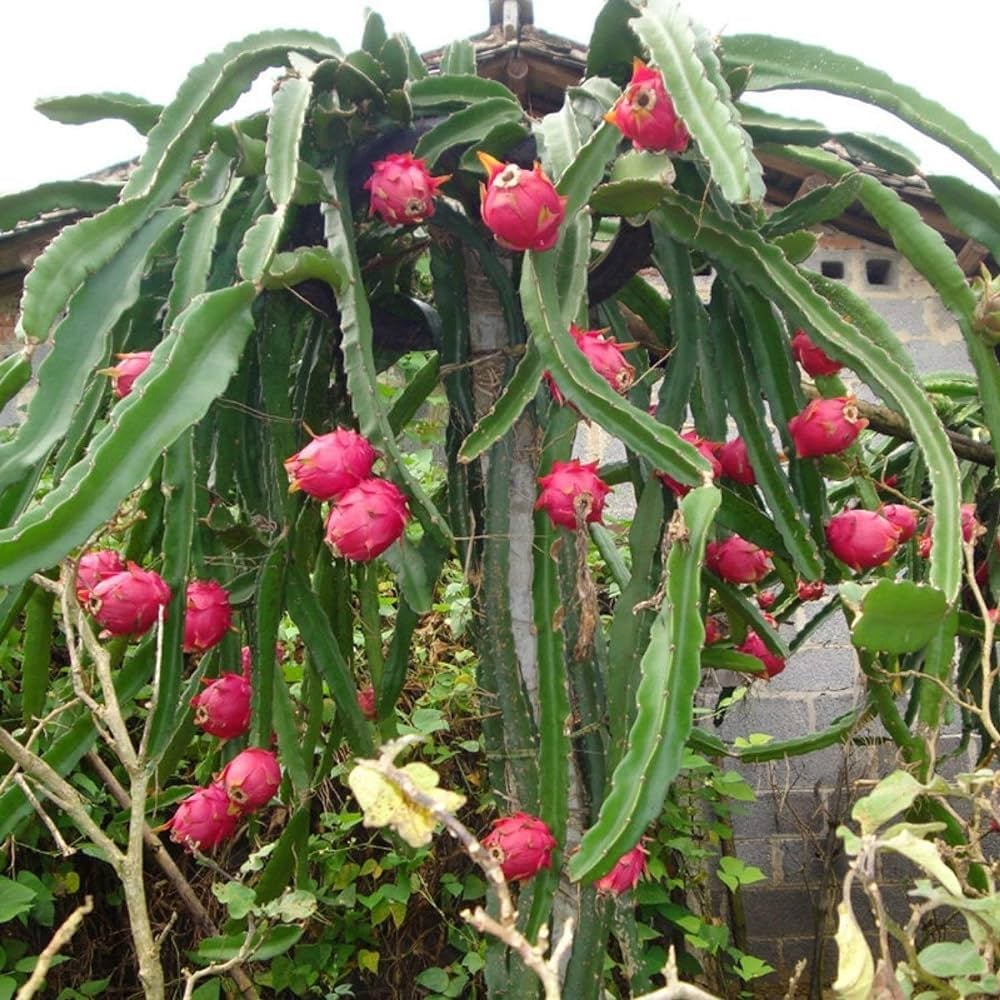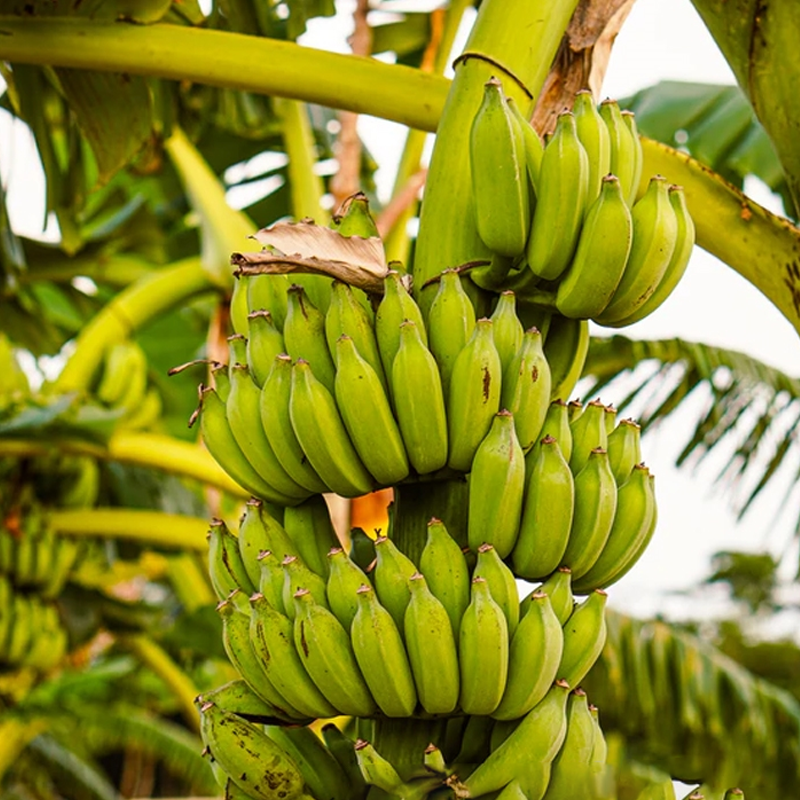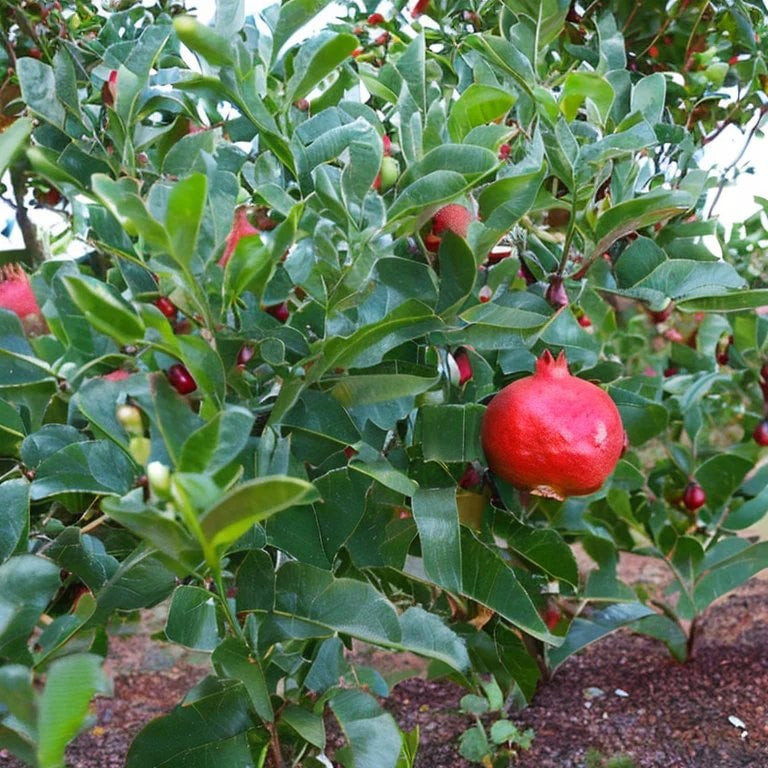
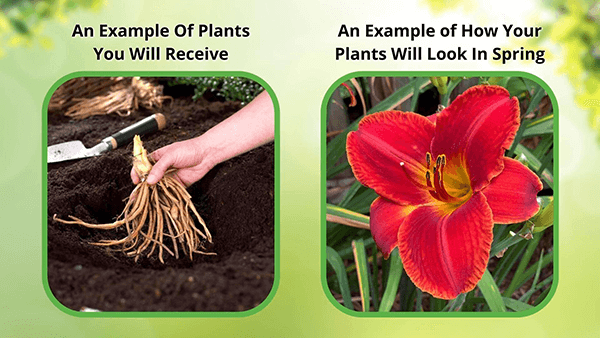

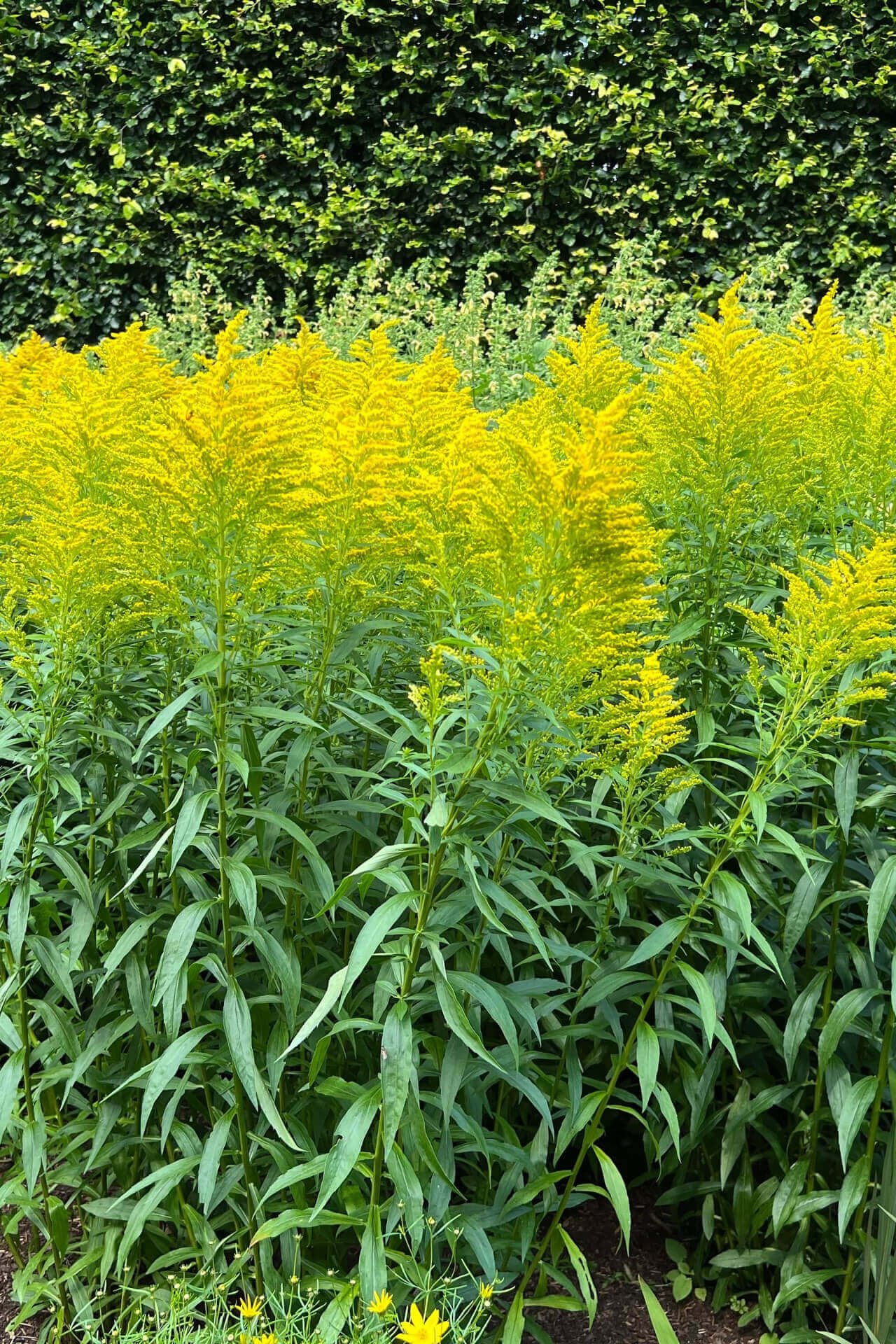
Golden Rod
Drought-tolerant and resilient
Supports local wildlife populations
Natural garden border solution
Thrives in
ZONE 3ZONE 4ZONE 5ZONE 6ZONE 7ZONE 8ZONE 9This plant ships:
Ships Week of May 5thGolden Rod - Solidago
Golden Rod is a perennial wildflower in the Asteraceae family. Its striking clusters of bright yellow, tufted flowers on upright stems contrast against its slender green leaves. This plant is known for attracting pollinators to gardens and meadows. It is a delightful and beneficial plant with several advantages in landscaping projects.
Golden Rod Has Sunny Flower Clusters
The bright and sunny blooms add a touch of warmth and joy to outdoor spaces.
This plant is beautiful to pollinators, such as bees and butterflies. The nectar-rich flowers serve as a valuable food source for these beneficial insects, supporting pollination in the garden and contributing to the health and diversity of the ecosystem. By planting it in the landscape, gardeners can actively promote biodiversity and contribute to the conservation of pollinators.
Moreover, it is well-suited for naturalistic or wildflower gardens. Its tall and airy growth habit allows it to blend seamlessly with other native plants and wildflowers, creating a natural and harmonious landscape. When planted in groups, it makes an eye-catching display that mimics the beauty of a meadow, attracting attention and admiration from garden visitors.
This plant is relatively low-maintenance, making it practical for landscape designs that require less care. Once established, the plant is generally drought-tolerant and can withstand dry periods, reducing the need for frequent watering. Additionally, it is usually resistant to pests and diseases, reducing the need for chemical treatments and promoting a more eco-friendly and sustainable landscaping approach.
Golden Rod Is A Low Maintenace Perennial
In conclusion, it offers several benefits when landscaping projects. Its vibrant appearance, attractiveness to pollinators, suitability for naturalistic gardens, and low-maintenance requirements make it a valuable addition to parks and outdoor spaces. By incorporating it into landscape designs, enthusiasts can create visually enchanting and ecologically friendly landscapes that support pollinators and contribute to the overall beauty and health of the environment.
It is a rich and captivating wildflower that graces the landscapes of North America, Europe, and Asia with its striking presence. This perennial herbaceous plant, often found in meadows, fields, and along roadsides, stands tall and proud, adding a touch of sunshine to its surroundings. With its slender stems reaching up to five feet, it boasts an elegant appearance that immediately catches the eye.
This Native Plant Blooms From Summer To Fall
The leaves are lance-shaped, alternating along the stem, and possess a rich green hue contrasting the yellow blooms. The blossoms typically emerge in late summer and early autumn and are the true showstoppers. Each plant bears clusters of bright, yellow, composite flowers that form plume-like inflorescences at the top of the stem. These striking blooms are composed of numerous tiny florets that create a stunning and intricate display of color, enticing pollinators such as butterflies and even hummingbirds.
Its charm extends beyond its visual appeal. A gentle breeze often carries a sweet, honey-like fragrance from its flowers, filling the air with a delightful scent. This scent and the mesmerizing sight of bees buzzing busily among the blooms symbolize mid to late summer and early fall in many regions.
It Is A Nectar-Rich Plant
In addition to its aesthetic and olfactory pleasures, it is vital in supporting local ecosystems. As a nectar-rich plant, it nourishes a wide variety of pollinators, contributing to the health of local bee populations and aiding in pollinating other plants. Moreover, its dense foliage offers shelter and habitat for numerous insects and small animals.
Its ability to thrive in diverse environments, from open fields to woodlands, adds to its allure, making it a resilient and enduring symbol of beauty in the natural world. Whether observed in a wild meadow or cultivated in a garden, its yellow splendor continues to captivate and inspire those fortunate to encounter it.
What Is it, And Where Does It Grow
It has bright yellow flowers and a rather tall stem. It grows in sunny places and is found in meadows, prairies, and roadsides. They bring a vibrant color to landscapes from late summer up to fall.
How do I care for it in my garden
It is easy to cultivate and grows in well-drained soils with direct sunlight. Upon establishment, it requires minimal watering and can grow in different varieties of soils and, therefore, ideal for beginners in gardening.
Do They attract pollinators
It is an absolute pollinator hub! It attracts beneficial insects like butterflies who love their flowers, making them suitable when preparing pollinator gardens.
Can It be grown in containers
They can be grown in large containers so long as they are provided with good drainage and a sufficient amount of sunlight. This makes it ideal for the backyard, patios, balcony, or any other limited outdoor space.
When does It bloom
Golden Rod usually blooms from late summer till fall. It provides vibrant color when other flowers are fading. Due to its long-lasting flowers, this plant is suitable for autumn gardens.
This Is How Your Plants Will Look upon Delivery
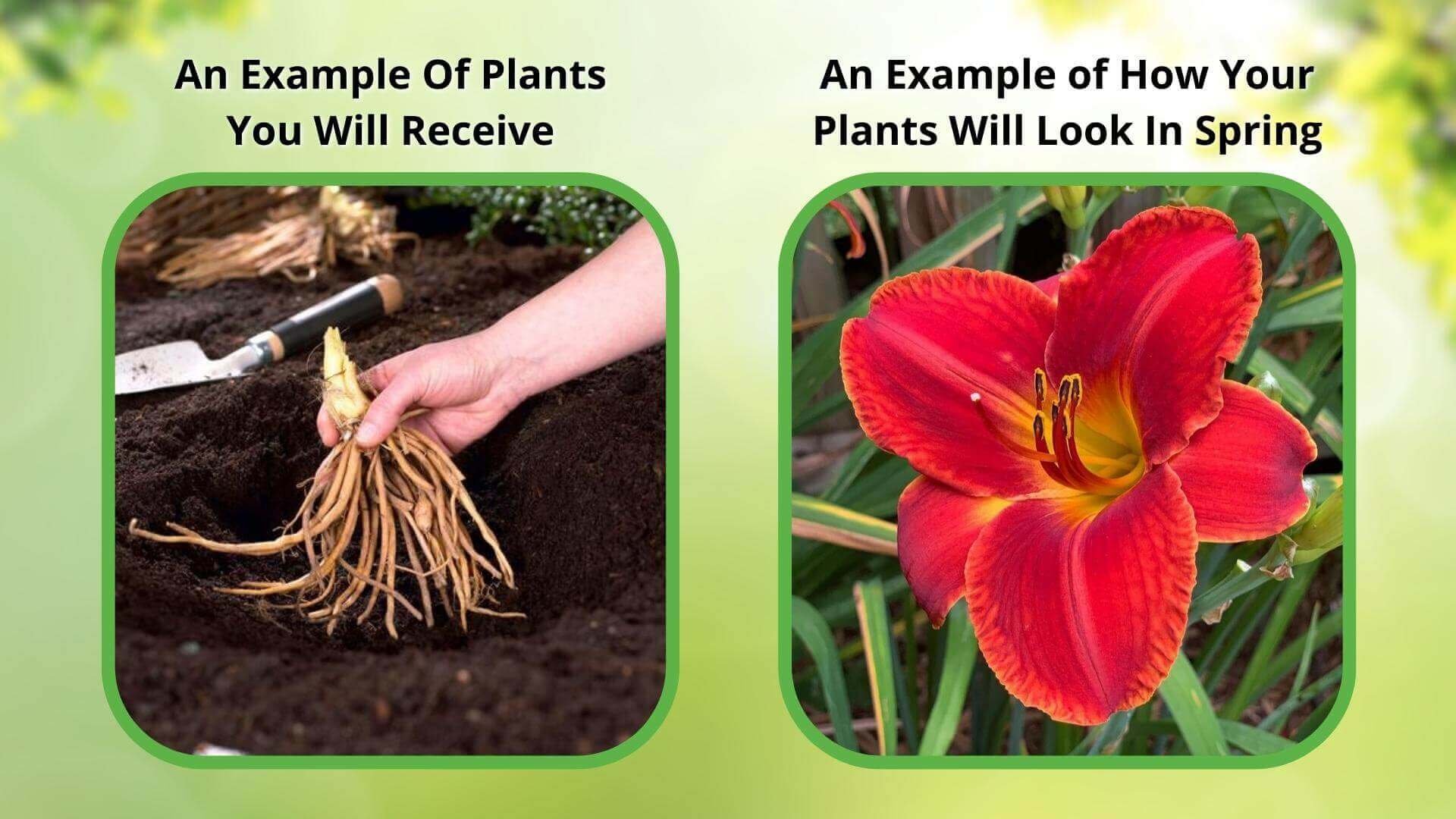
Bloom Season
Summer
Bloom/Foliage Color
Yellow
Height at Maturity
Over 12"
Care
Goldenrod thrives in well-drained soil and requires regular watering, especially during dry periods. It benefits from occasional feeding with a balanced fertilizer. Cut off old blooms to stimulate more flowering and prevent self-seeding. Prune back in late winter or early spring.
Plant Reproduction
Golden Rod spreads by seed and by underground rhizomes.
Shipping date depends on the date displayed and chosen when you order from the product's page.
We only accept returns on plants verified dead. If you think your plants have died, we offer a 1 year warranty, please use this File a Claim Link to verify dead plants and start with return warranty process.





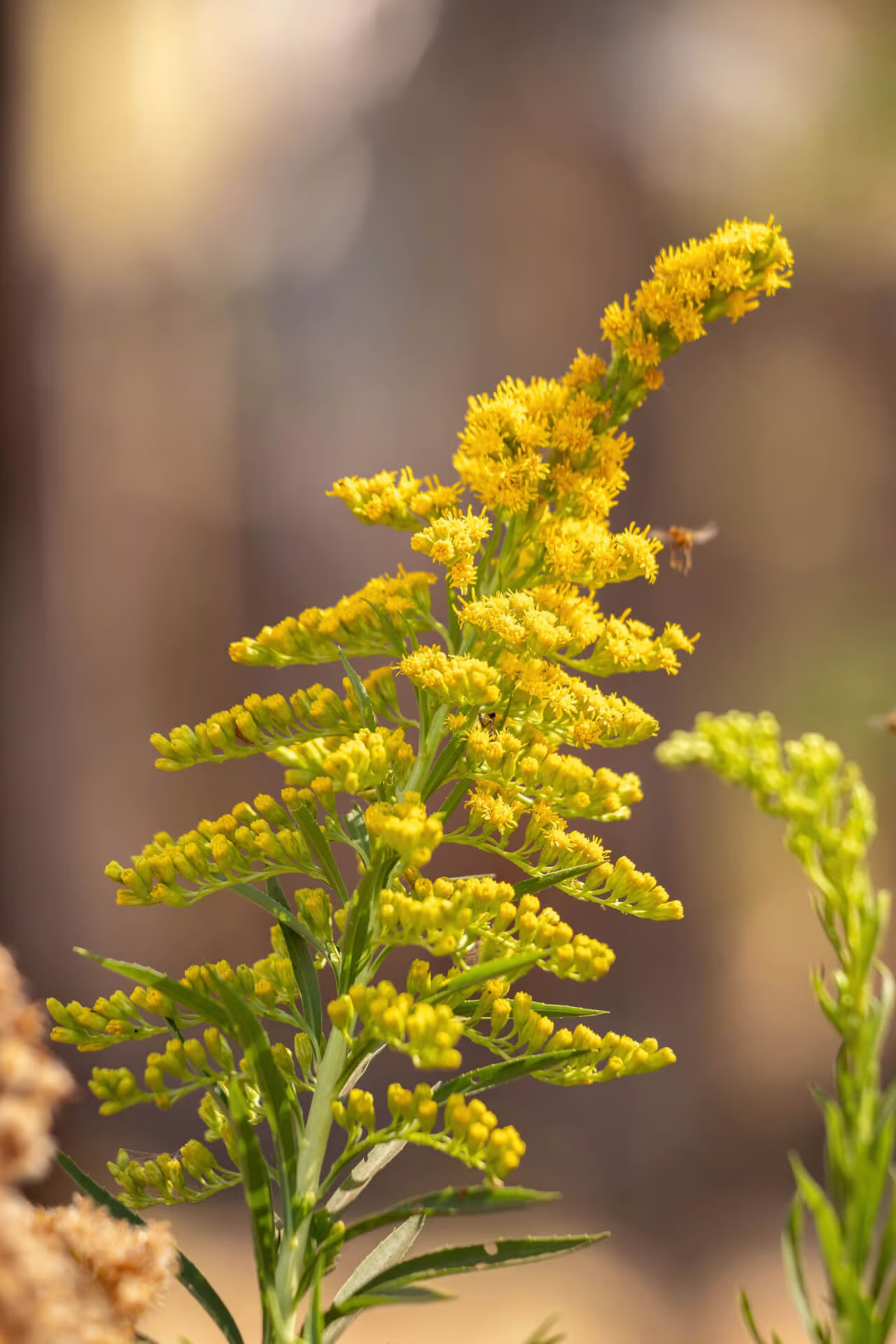
Drought Tolerant:
This resilient plant thrives in dry conditions, perfect for water-wise gardening.
Warm and Joyful Blooms:
The bright and sunny blooms add a touch of warmth and joy to outdoor spaces.
Ecological Benefits:
Goldenrod's dense foliage offers shelter for insects and small animals, enhancing the health and diversity of local ecosystems.
Supports Pollinators:
Attractive to bees and butterflies, Goldenrod's nectar-rich flowers support pollination and biodiversity.
Caring Tips
How do I care for my Golden Rod?
Each box contains detailed care instructions and information about your product. But here's the basics.
Care Tips
Goldenrod thrives in well-drained soil and requires regular watering, especially during dry periods. It benefits from occasional feeding with a balanced fertilizer. Cut off old blooms to stimulate more flowering and prevent self-seeding. Prune back in late winter or early spring.
Light Requirements
Goldenrod (Solidago) thrives in full sun to partial shade. It prefers at least 6 hours of direct sun daily but can handle some shade, especially in hotter climates. Adequate sunlight ensures vibrant blooms and vigorous growth.
Hardy Planting Zones
3 • 4 • 5 • 6 • 7 • 8 • 9
Header
Use this content to share information about your store and products.
Frequently Asked Questions
How often should I water my plants?
How do I know if my plant is getting too much or too little sunlight?
What should I do to prepare my plants for winter?
What are the signs that my plant needs fertilizing?
How can I prevent pests from damaging my plants?
How do I choose the right plant for my climate zone?



